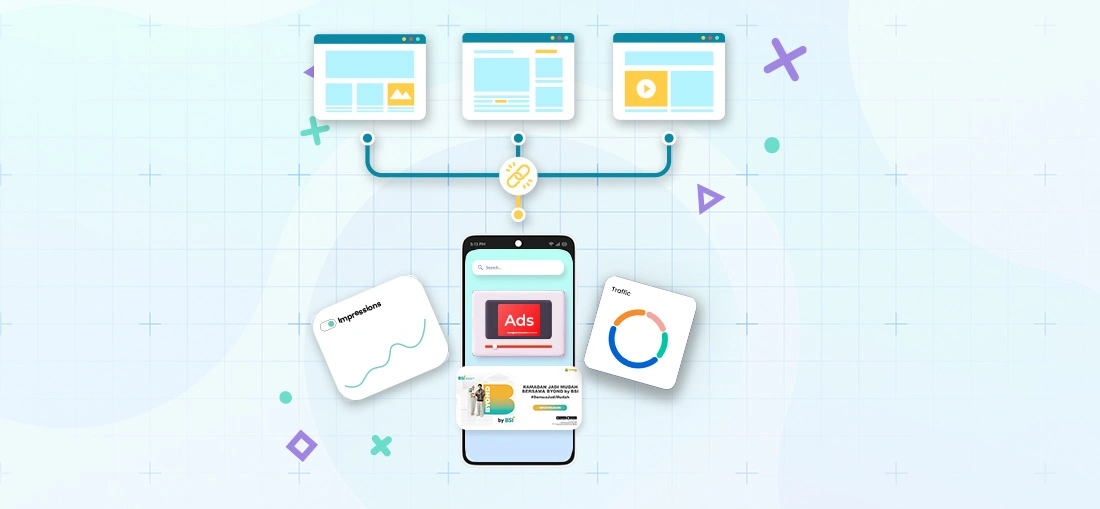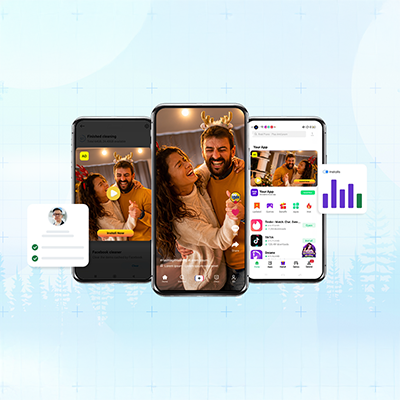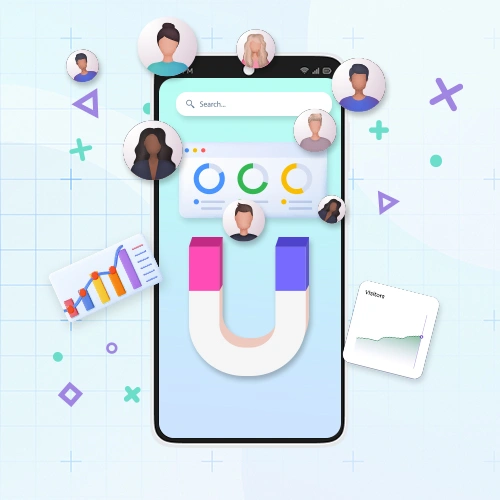Advertisers constantly seek variants in their marketing practices that never let their users go or become the churned users. To protect user’s interest and sustainability with an advertiser’s brand, Deep Linking acts as a saviour, allowing easy app navigation.
So, let’s read in further detail about what deep linking is, how it works and benefits for an advertiser who makes efforts in creating an easy user journey from any channel into the app and achieving marketing goals
What is Deep Linking?
Enabling users to move directly from a campaign to a specific page inside an app. It is a versatile method of improving the app’s key metrics especially the Retention and Engagement rates. It also optimises and streamlines the entire user journey and often makes the process clutter-free. The technology is mainly called “Deep Linking” because it refers to and sends the users “deeper” inside an app, specifically to the direct pages of offerings. Therefore, app marketers use deep linking the most to highlight the page that works superior besides direct linking of the homepage to a campaign. For example, if you want users to know about your ‘dog food product’ from your e-commerce app, you can add a deep link to the dog food product’s page, that would take a user straight away to the product’s page inside an installed app, instead of just opening it. Therefore, getting the deep links done right is worthy and effective enough in bringing the success of the campaign.
Types of Deep Linking: Two typesof Deep Linking- Default Deep Linking and Deferred Deep Linking are useful for advertisers.
1: Default Deep Linking: It only takes a user inside an already installed app. If the app isn’t installed then, the link will display an error message and won’t reach the endpoint. This form of deep linking is used for retargeting campaigns when advertisers want the users to return to an app.
2: Deferred Deep Linking: This form is a bit more complex than Default Deep Linking because it first takes a user either to an App Store or Play Store to install an app and then, redirects him to an original page. For example, a user clicks on an ad of “buy one get one free meal offer”; but doesn’t have that food app installed in his device then, he will first be routed to the store for app downloading then the product page would be shown.
Benefits of Deep Linking for Advertisers: There are various reasons that deep link benefits advertisers and have become an important part and powerful engagement tool of their marketing strategy
Retargeting & Retention: It helps in in-app promotion by skipping the redirection of App to store resulting in lesser navigation. For instance, when a user watches an ad of a bag, he intentionally clicks on it to purchase, wherein, a deep link would take the user to land directly at the bag’s collection page. This often gives an advertiser better control to target the potential consumers with more possibilities to increase transaction and revenue. Besides this it also helps the advertisers in better targeting of audience via retargeting campaigns. Placing deep links into the retargeting campaigns gives app marketers an extra edge and easy activation of the lapsed user. Because, when lapsed users click on an ad, they get to the exact location with some rewards from where they dropped off (as the user hasn’t uninstalled an app) which results in engagement of the lapsed users again with better retention rates.
Higher Conversion Rates: The conversion rates with deep linking practice are always high because the campaigns are often personalized to the audience’s interest. Hence, an amalgamation of deep links with personalized campaigns is the most powerful strategy that aims to increase conversions with deepening user loyalty.
Lookalike Audience Segmentation:. A lookalike audience is a way to reach the new audience who are likely interested in your brand and are based on the demographic data. Segregation of lookalike audiences serves an advert with quality user funnelling and enables easy targeting of valuable users as well on whom they can invest quality cost with better ROAS.
Converts Users from Web to Native Apps: With users dependency on mobile apps, they want everything to get done in fractions of time. Therefore, deep linking is a way to get people to convert to the same viewed product from the web to the app. For instance, if a user saw a pair of sports shoes on the web then, a deep link campaign will straight away take him to the product page having the sports shoes inside an app, cluttering the navigation from opening the app to the home page and exploring products. This strategy also helps advertisers to maintain track of click-to-conversion rates and drop-off rates separately.
Bolster UA Campaigns: The user acquisition campaign bolstered the best with Deferred Deep Linking because a user doesn’t have the app installed on his device. With deferred deep linking, the campaign first acquires the user and takes him to an in-app location. In such scenarios, the data from clicking on a campaign gets logged and shows the users the content that drove the installs, immediately after opening the app and results in better conversion.
Considering all the benefits, it can be analysed that deep linking is the best way of directing users for better user experience, incremental sales, conversion and retention rates. Hence, it’s an important part of today’s marketer’s mobile toolkit.
After a thorough brief of what Deep Linking is all about, adverts must also know “how” to do it to reap its benefits. The industry top MMPs have already kept a provision to implement Deep Linking, here’s how
Branch.io : https://help.branch.io/using-branch/docs/creating-a-deep-link
AppsFlyer: https://support.appsflyer.com/hc/en-us/articles/360000724598-Deep-linking-with-OneLink-best-practices#onelink-and-desktop-users
Kochava: https://support.kochava.com/reference-information/deep-linking/
Adjust: https://help.adjust.com/en/article/deep-linking-ios-sdk



